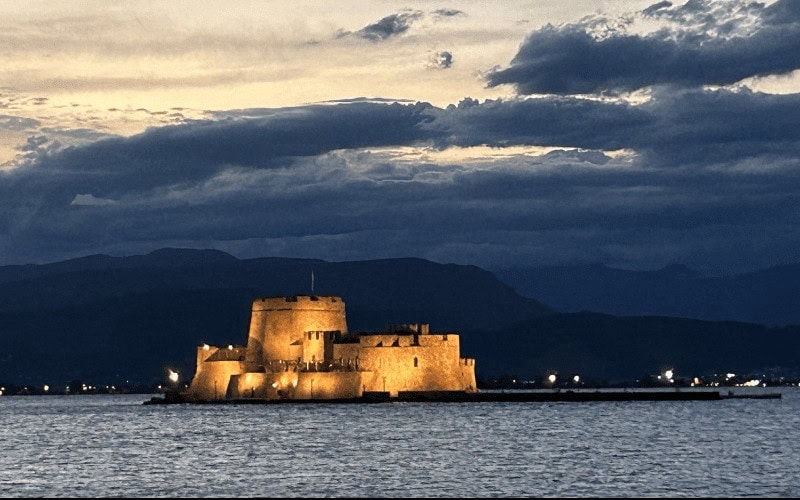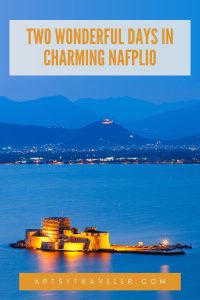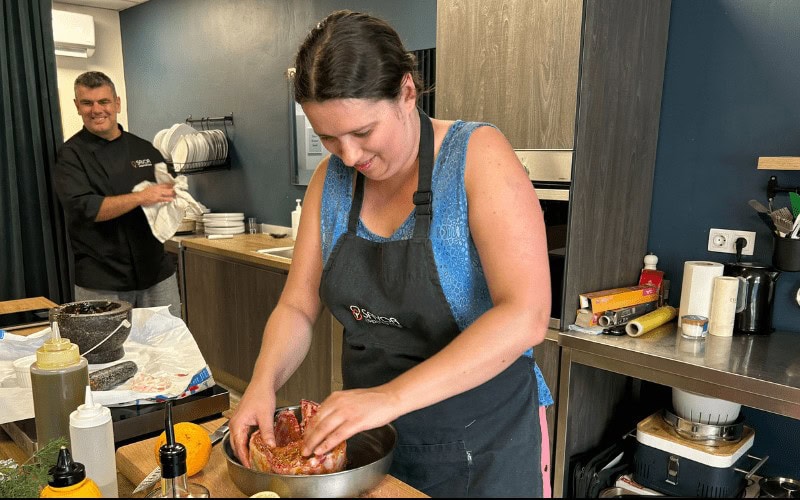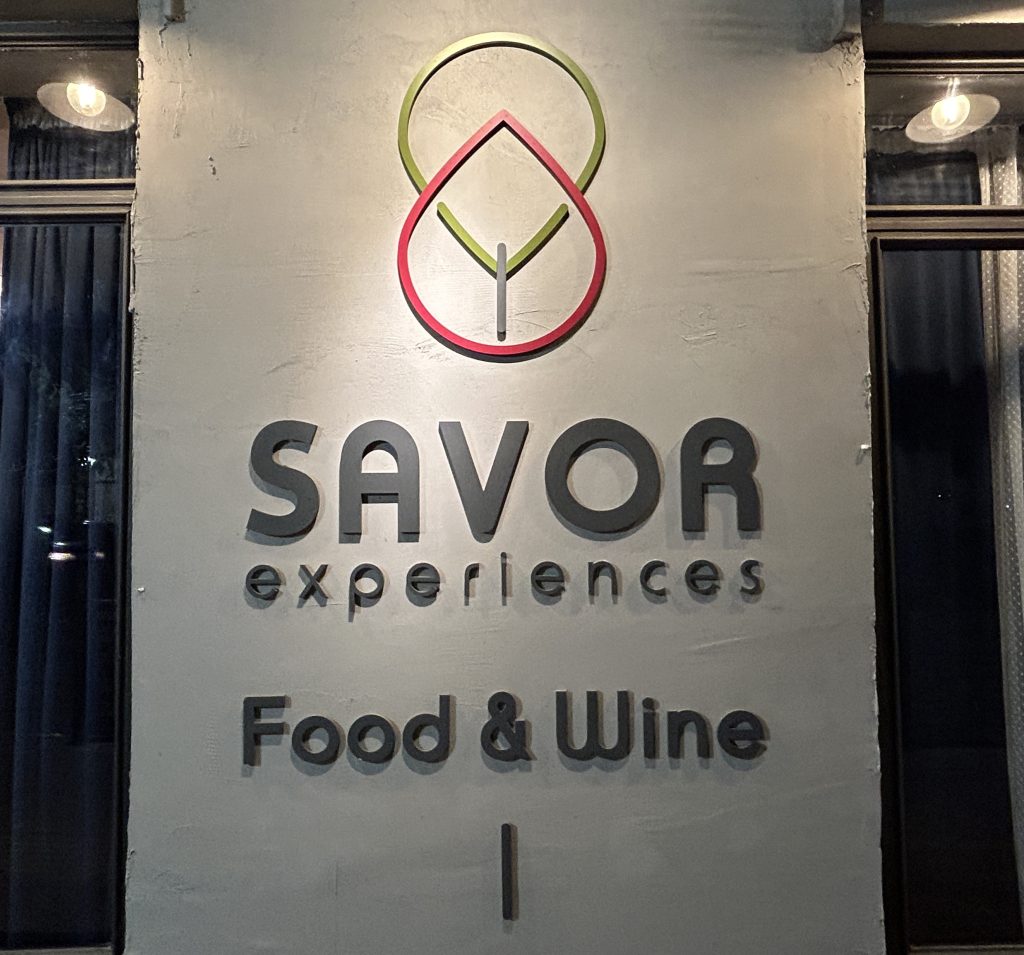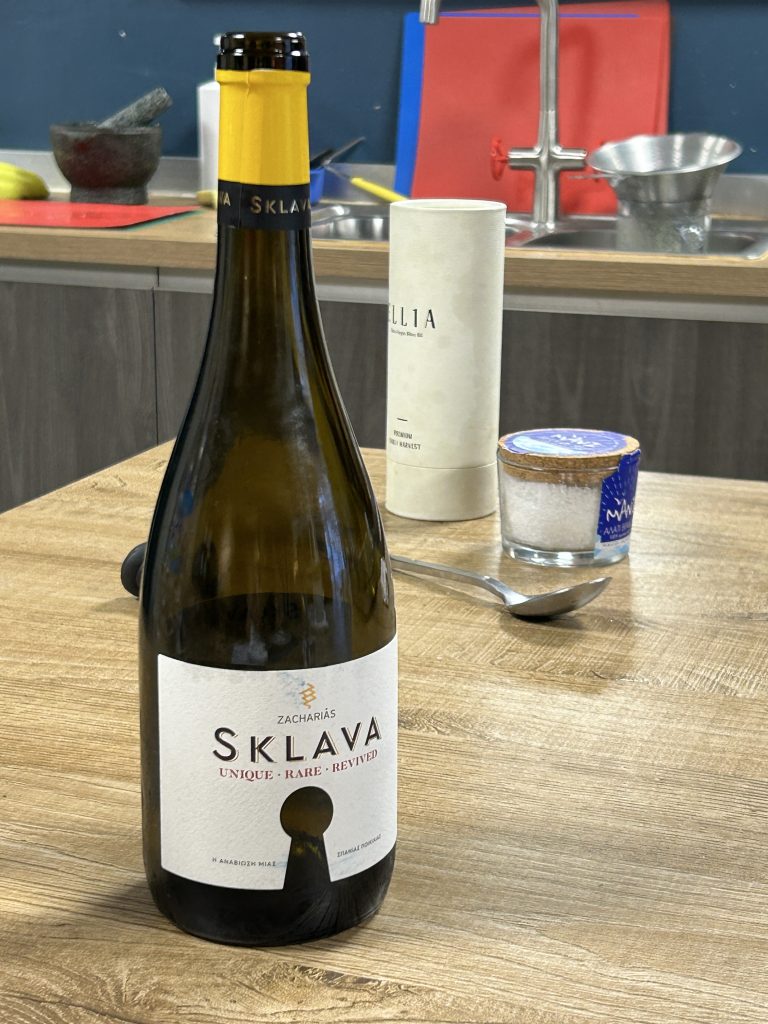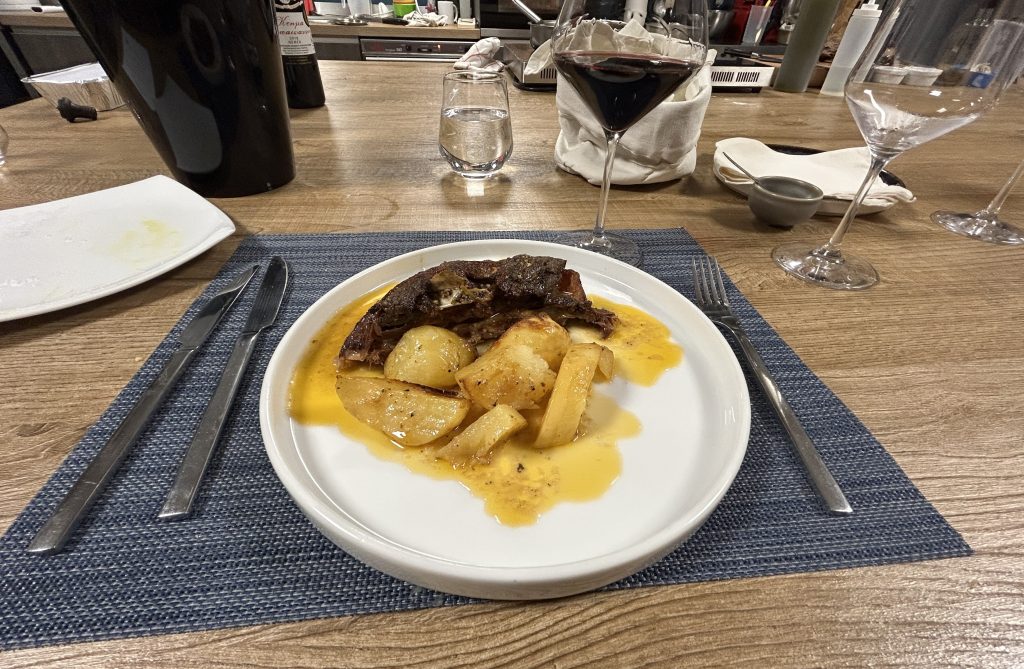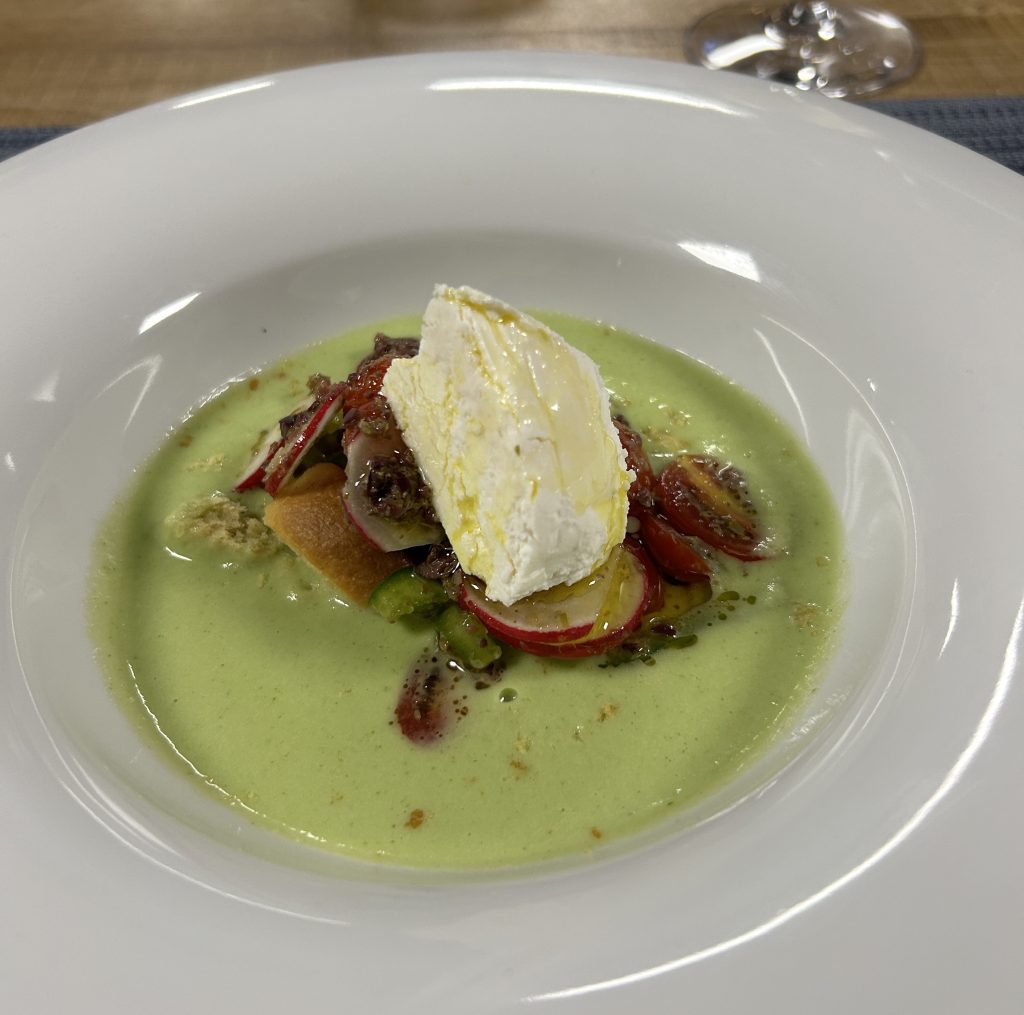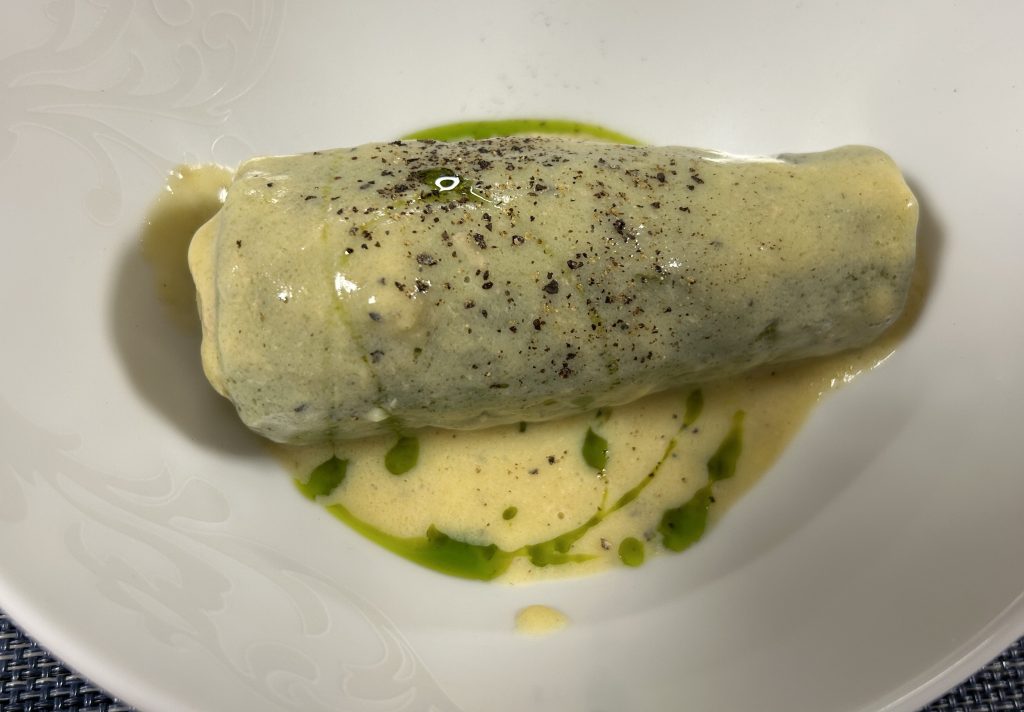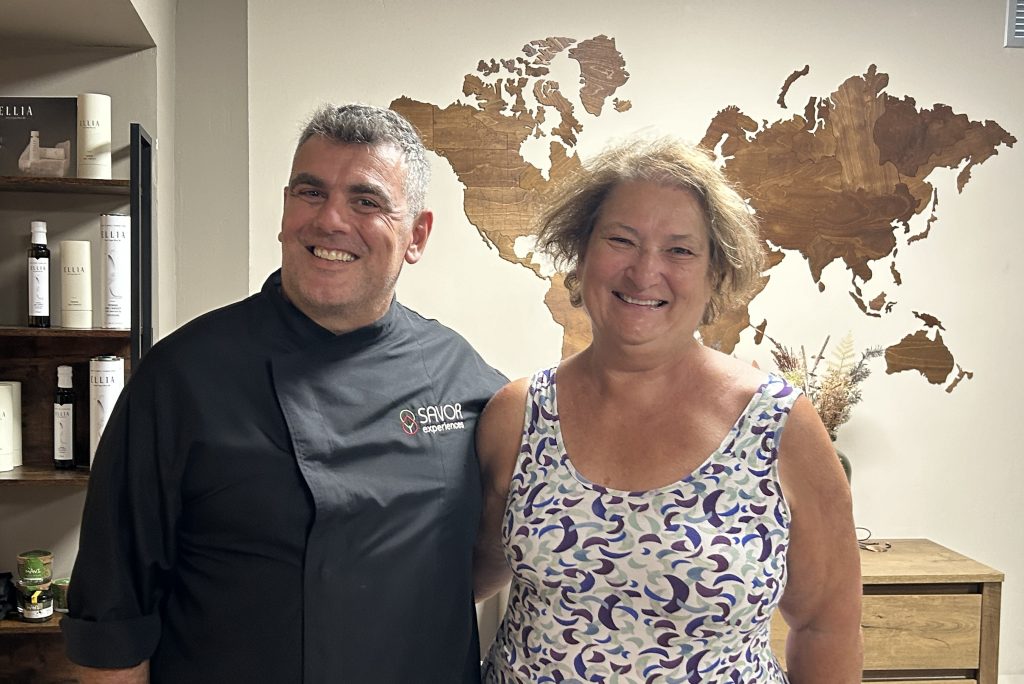How To Spend Two Wonderful Days in Charming Nafplio in Greece
Nafplio At a Glance
- Visit the Palamidi Fortress for stunning views
- Take a cooking class with Savor Nafplio
- Take a private guided tour to Mycenae, Corinth and Epidaurus
- Stay at 99 Dream Vacations, a reasonably-priced apartment in the center of old Nafplio
Overview of Nafplio
History of Napflio
Floodlit at night, the two fortresses visible from the seafront add a romantic touch to this elegant little town.
Getting to Nafplio
After a three-hour ferry ride from Naxos to Piraeus (check out my post about our three nights on beautiful Naxos), we take a private transfer to the charming city of Nafplio, a two-hour drive on a mostly empty highway.
The cost of the private transfer is about $250 and while not inexpensive, it was a much more convenient way to get to Nafplio from Piraeus. The alternative would taking a taxi into Athens and then catching a bus to Nafplio or renting a car.
When you are on a fairly tight itinerary, spending extra to save time makes good sense.
You could visit Nafplio on a day trip from Athens, but don’t! As mentioned above, Nafplio is worth at least two nights and preferably three or four.
Arrival in Nafplio
The driver drops us off in the little square in the middle of Nafplio old town a few meters above our place and points down a narrow alleyway.
Your apartment is down there.
Okay…
We trundle down the narrow street to another narrow street flanked with souvenir stores and look around hopefully. Julia spies the name of the apartment high up on a wall: 99 Dream Vacations. Now all we need to do is get in.
Staying in Nafplio
I text our host and, to my relief, she rounds the corner into our street minutes later and lets us into a beautiful apartment complete with high wood-beamed ceilings, a comfortable living room and two bedrooms.
The kitchen is stocked with provisions for breakfast—tubs of creamy Greek yogurt, along with eggs, fruit, bread, and enough coffee pods to keep me well caffeinated for the entire stay.
I highly recommend 99 Dream Vacations if you’re looking for a centrally located and reasonably-priced apartment. Here are photos of the living room and adjacent dining room.
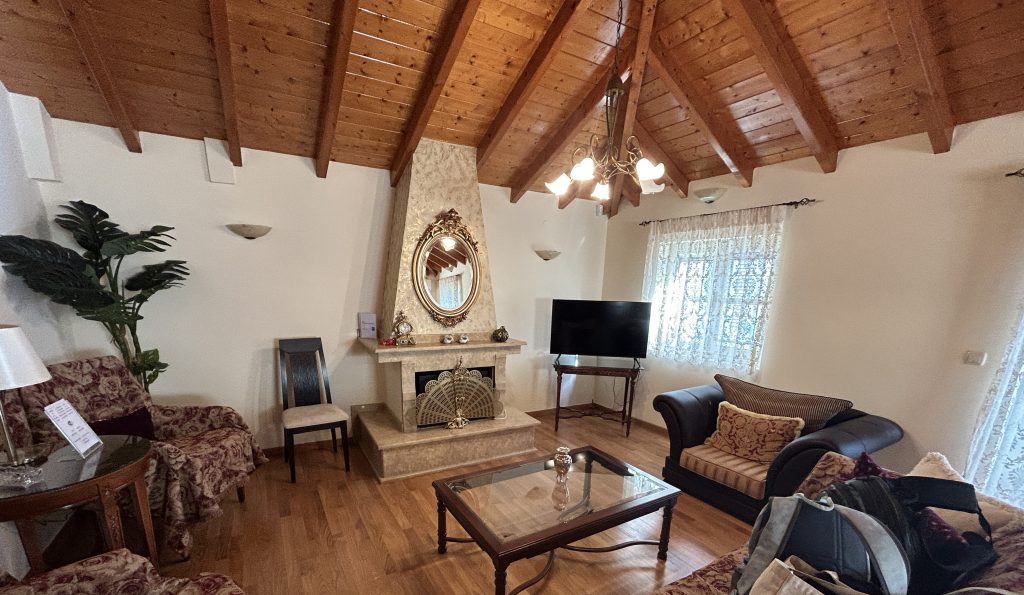
Getting to Know Nafplio
On our first evening, we stroll around the cute streets of the old town of Nafplio, all brightly lit until late in the evening, and share a very tasty pizza at a café overlooking the Bourtzi fortress in the harbor. The fortress is one of three built by the Venetians.
As usual, the service is efficient and friendly. During our entire 16-day trip in Greece, we never once experienced poor service.
After dinner, we treat ourselves to an Italian gelato at a gelateria reputed to serve the best gelato in Greece. The server greets us in Italian, and the gelato is indeed excellent. Several hundred years of Venetian occupation have left their mark on Nafplio.
Day 1 in Nafplio – Exploring the Town
Our first full day is a semi-down day with very little planned beyond taking a cooking class at 5 pm. Nafplio is a charming and walkable town, but it’s fairly low on sights.
I recommend checking out the Archeological Museum and the Venetian Fortress of Palamidi (also known as Palamidi Castle) perched high above the town, and then spending the rest of the day relaxing, shopping, eating, and strolling (not necessarily in that order).
Archeological Museum of Nafplio
After breakfast at an outdoor cafe in Nafplio’s old town, we head to the Archeological Museum to learn all about the early inhabitants of the area—some dating back 30,000 years. This is a very old part of the world!
The Archeological Museum in Nafplio is well organized and compact and definitely worth a visit if you are interested in ancient history (and hey, you’re in Greece!).
The permanent collection includes artifacts dating from the Paleolithic period to Roman times. The most important exhibits are associated with the Mycenaean centers of the region.
All the exhibits include informative English captions. I particularly like the collections of pots, including a well-preserved Octopus pot.
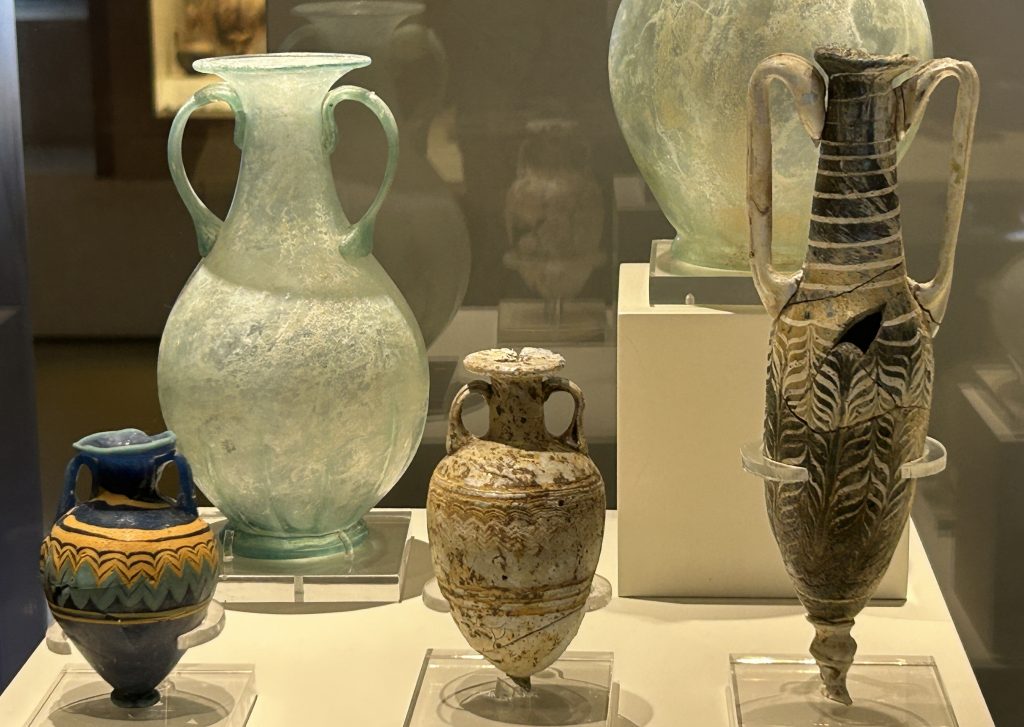
A highlight of the museum is a suit of bronze armor that was found in a chamber tomb dating fthe 15th century BC. Check out the boar tooth helmet. Imagine how many boars gave their lives to make that helmet.
I also snap a picture of three reconstructed theatrical masks. As a former theater major (back in the day, I got my Master’s in theatre from the University of Toronto), I have a soft spot for Greek theater and am looking forward to our visit to the ancient Greek theater at Epidaurus.

Tourist Train in Nafplio
With the clouds threatening rain, we set off after our visit to the museum to find the hop- on-hop-off tour bus that will, according to the guidebook, take us up to the fort.
We could climb the 999 steps from the town to the top, but we won’t.
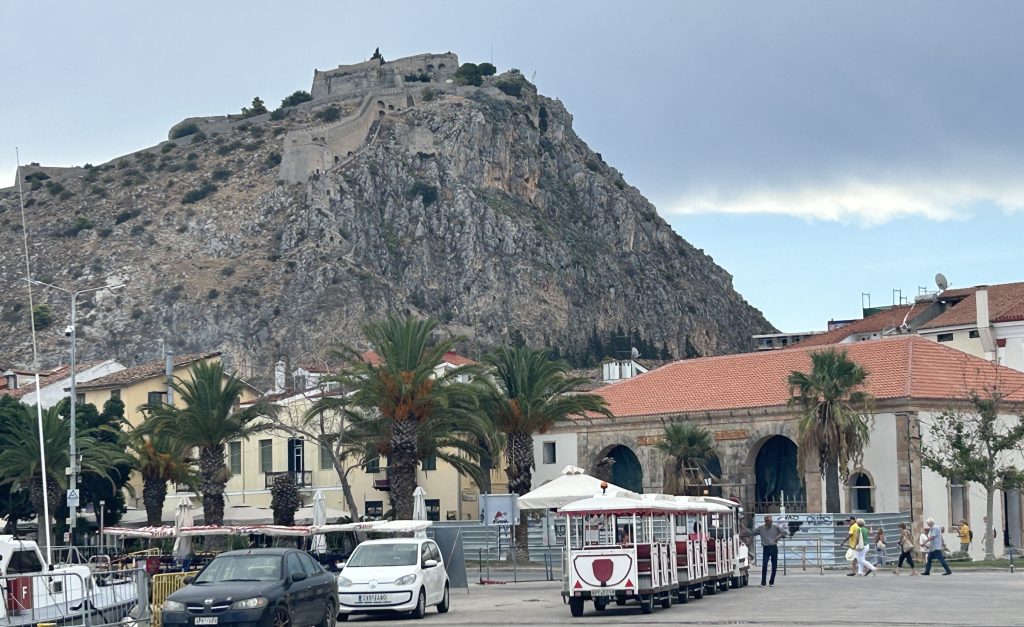
At the bus stop, we discover a little tourist train next to a sign advertising a 20-minute meander around the town. With 30 minutes to spare before the hop-on-hop-off bus arrives, we decide to give the tourist train a whirl.
Feeling like toddlers on a day trip, we clamber into the train which sets off at a painfully sedate pace. My great-grandma could walk faster.
The English commentary is not particularly compelling and the only charming streets we putter down are ones we’ve already walked along.
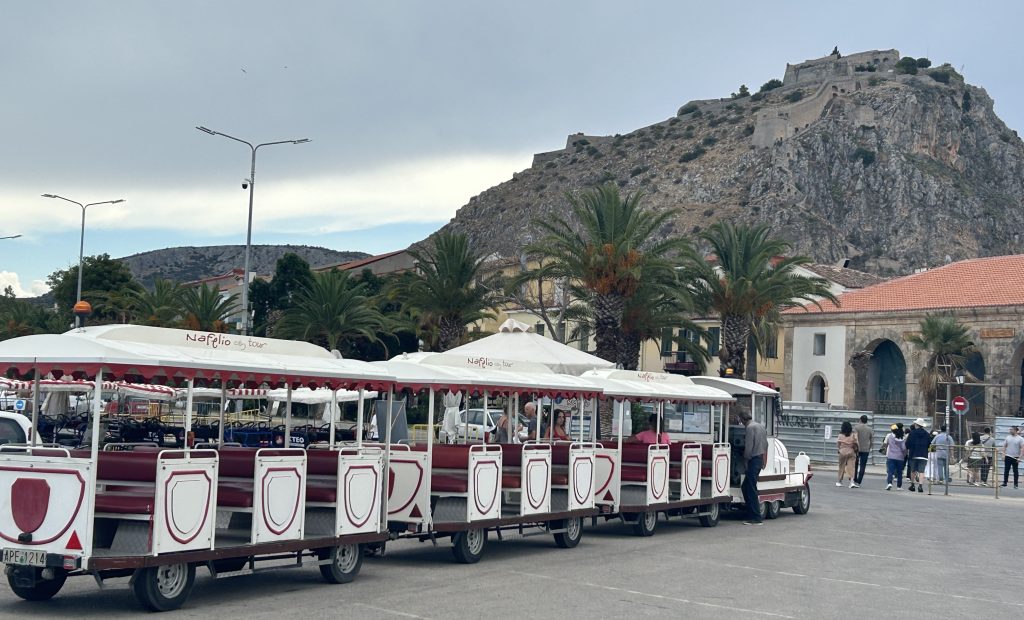
At one point, we squeeze past the café where we had breakfast. We want to sink through the floor as the server catches our eye and kind of smirks as if to say, Really? You fell for the tourist train tour? Don’t you know it sucks?
She is right. For the next twenty minutes, we chug along, often stuck for several minutes in traffic with nothing to see either side but graffiti-scrawled walls and kids playing volleyball at the local high school.
The train circles through the modern part of the town which doesn’t have much to recommend it, with some vistas appallingly ugly.
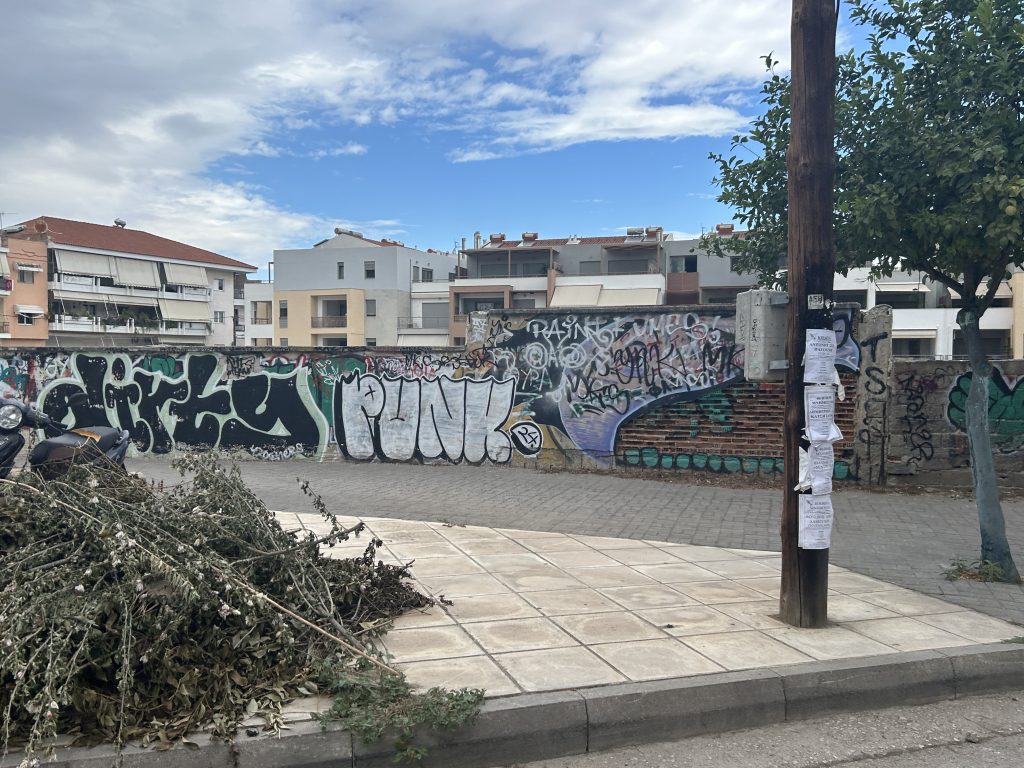
Finally, excruciatingly, we arrive back at the parking area only to discover that the bus has already left. So much for that plan! But no matter; the skies have been steadily darkening and we feel a few raindrops.
Rather than go up to the fort where the main attraction is views of the sea, we decide to head back to our lovely two-bedroom apartment for some R & R.
I write for a while, nap for a while, and around three o’clock, the skies clear and we venture out again.
Fortress of Palamidi
We have two hours before we need to be at our cooking class, so we catch a taxi up to the fort. The driver says he’ll return for us in one hour and that we can pay him then.
I’d read that the taxi ride from the town to the fortress should cost about 10 euros so I figure that I may as well give him my 20 euros for a round trip rather than take my chances that a taxi will be available when we emerge from the fort.
We wave a cheery good-bye to the driver and set off to explore the Venetian fort. There’s not much left of the fort itself, but the views are jaw-droppingly stunning.
We clamber and climb over the remains of the ancient fortifications, snapping picture after picture of views Nafplio that go on forever. It’s a wonderful place to visit—a Nafplio must-see for sure.
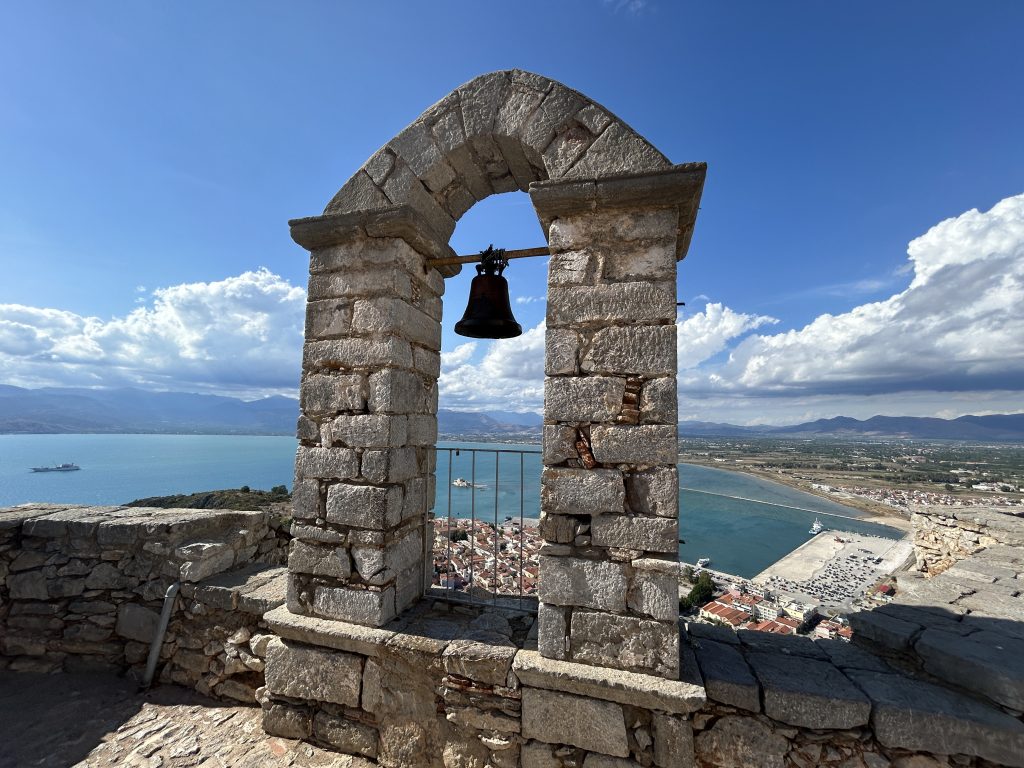
After much climbing and snapping photos of views of Nafplio, we enjoy a drink at the tiny concession inside the Palamidi Fortress.
We exit the fort precisely one hour after we arrived and find our driver waiting.
After a few wrong turns, he drops us off at Savor Nafplio Cooking School a few minutes before 5 pm. He also charges us 40 euros for a round trip that should have cost 20 euros. But what to do? I hand over the cash and chalk it up to one of the few times we are ripped off in Greece.
The cooking class is a must-do! See my post all about it.
Day 2 in Nafplio – Tour of Ancient Sites
We’re up early on our second full day in Nafplio to take a guided tour of the major archeological sites in the area: Mycenae, Corinth and Epidaurus.
I’ve read about these places for decades and seen pictures, so I’m beyond excited to finally see them in real life, especially the ancient theater of Epidaurus.
If you have a car, you can take day trips from Nafplio to visit the ancient sites. We did all three in one day, which felt very doable.
A few minutes before 9 am, we walk into the small square near our apartment and meet our driver, George. To our delight, we’re in a small van rather than a bus and traveling with just two other people—a honeymooning couple from New York.
George inches the van down a very narrow street lined with stone houses on one side and restaurant tables and chairs on the other. He makes it to the end of the road unscathed and then negotiates several tiny maneuvers to coax the van around a very tight corner hemmed in on two sides by parked cars that he passes with centimeters to spare.
It’s an impressive display of driving skill, and I feel we are in good hands.
George sets off towards the ancient city of Mycenae. He is very enthusiastic about the Mycenaeans, a still-mysterious culture that thrived around 3000 to 1700 BC, after the Minoans, but well before the Athenians (500 to 300 BC).
Mycenae
Around 1600 to 1200 BC, the city of Mycenae ruled its mighty empire from atop a hill now littered with evocative ruins and some truly marvelous tombs. Historians don’t know all that much about the Mycenaeans—who they were, where they came from, and what happened to them.
We do know that around 1200 BC, the Mycenaeans defeated Troy and became the rulers of the Aegean before mysteriously disappearing from the ancient map.
Tomb of Agamemnon
Our first stop is known colloquially as the Tomb of Agamemnon. It is very likely not Agamemnon’s tomb, but calling it the Tomb of Agamemnon is better than calling it the Tomb of Some Bronze Age Dude We Don’t Know.
Its other name is the Treasury of Atreus, which isn’t nearly as romantic nor as descriptive since the site is, definitely, a tomb. Or was.
We are the only people at the site until the honeymooners catch up with us, and I am thoroughly verklempt. Here’s the entrance to what is called a beehive tomb.
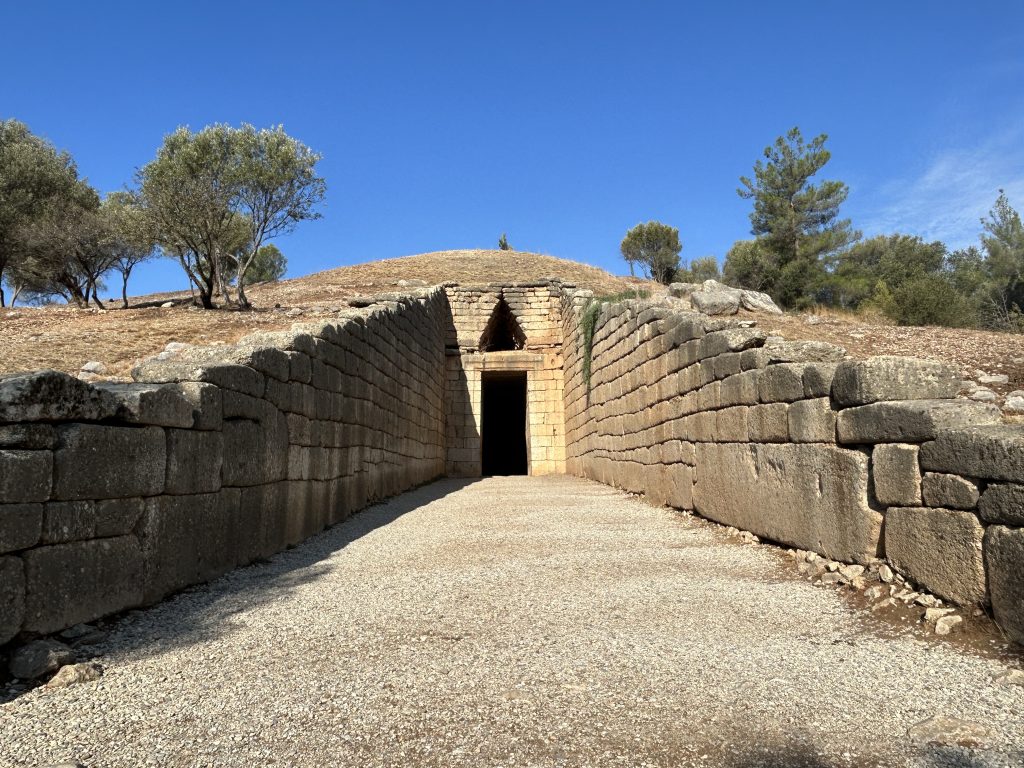
The interior of the tomb is massive, its high stone ceiling a testament to Bronze Age architectural know-how. The walls of horizontal stone blocks rise up and up to a height of more than 13 meters, decreasing in diameter the higher they go until the dome is closed.
I breathe in the smell of ancient stone and let my imagination soar to the height of the tomb. This place is almost 4000 years old. It was already ancient history when Plato walked the earth.
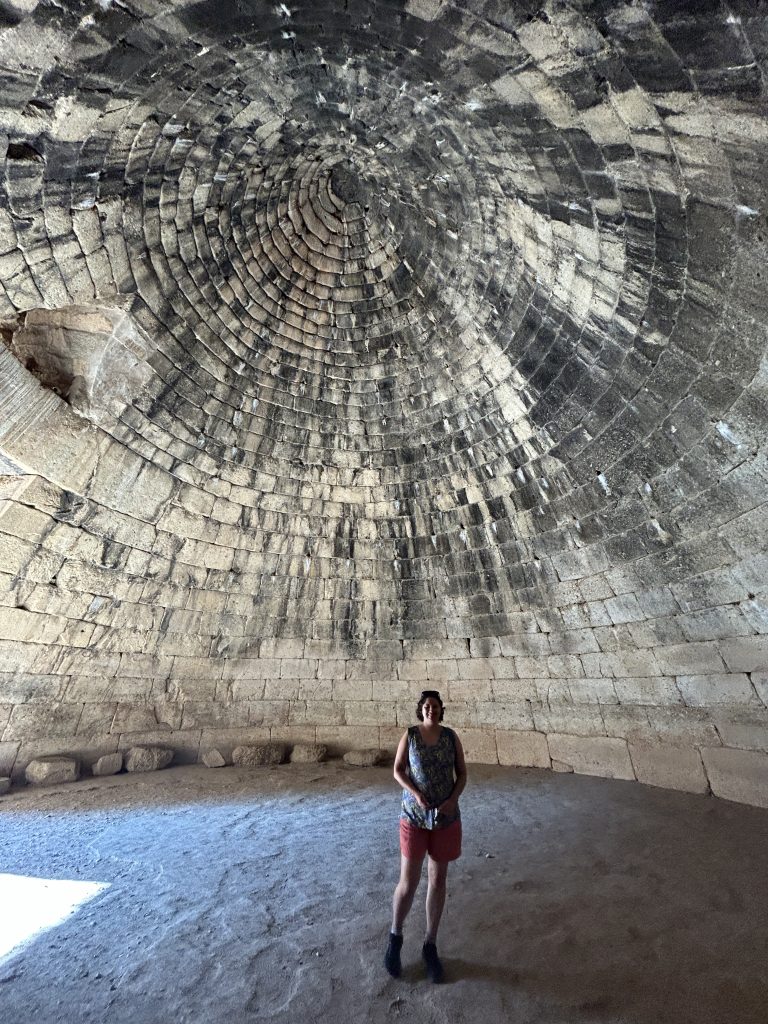
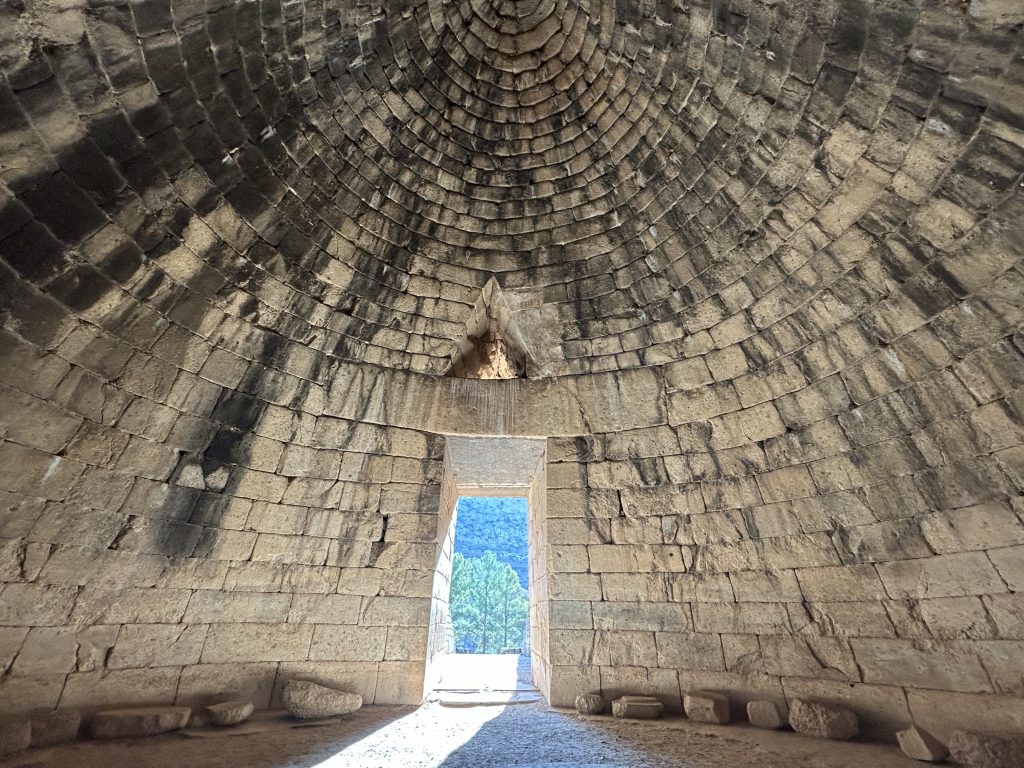
Try to arrive as early as possible, preferably just after the site opens to avoid the crowds. I am so grateful I was able to see the tomb on my own rather than with five dozen people all crammed together and simultaneously snapping photos. Talk about an imagination killer.
The honeymooning couple take our picture all alone in front of the tomb. Very soon, taking this same shot with no one else in it would be impossible.
In the five minutes it takes for George to drive from this site to the main site of the Mycenae Acropolis, five tour buses have pulled in. The early visitor definitely gets the best shots.
Palace of Mycenae
The sparse ruins of the palace high on a hill overlooking a spectacular view are pretty much all that’s left of a great and powerful empire. But one element is a show-stopper—and that’s the famous Lion’s Gate that dates from around 1300 BC.
I remember seeing pictures of it back when I first studied art history. It was touted as an incredible engineering achievement, considering its age. In fact, the relief of the lions is the oldest monumental relief in Europe.
The stone lintel upon which the carving of two headless lions sits weighs over 18 tons.
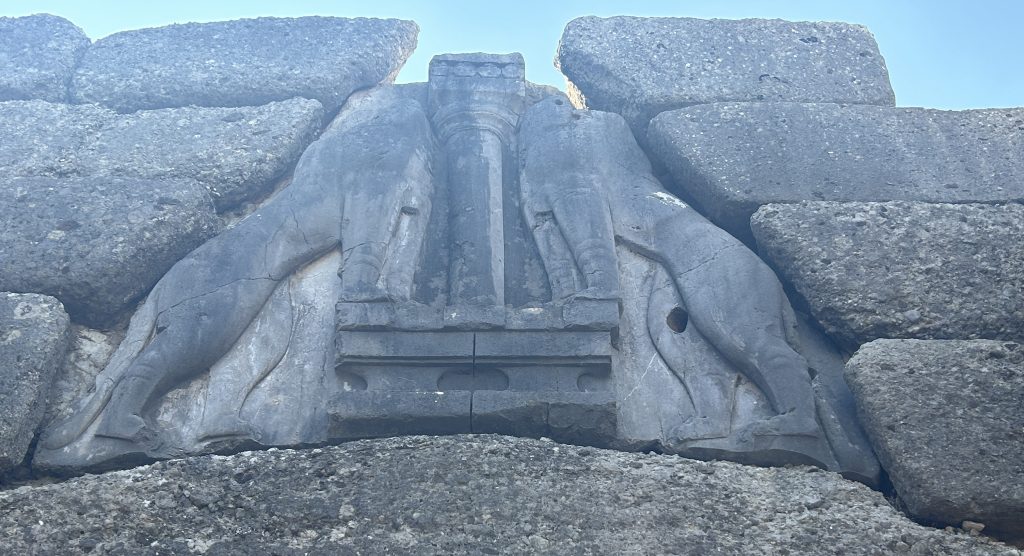
Awestruck, I pass through the gate and then start the climb to the top of the site. Those ancient Mycenaeans must have been in great shape. The climb is steep but worth the effort.
At the top, I take this panoramic video that shows the beauty of the surrounding countryside.
I’m captivated by an area of the ruined palace called the Artisan Quarter. This was once an extensive building complex that consisted of two stories (although only the foundations survive). Based on finds such as ivory objects, gold leaf, and remnants of semi-precious stones, archaeologists believe the buildings must have contained artists’ workshops.
Hmm, a novel about a Mycenaean jewelry maker? Maybe he’s kidnapped by the Sea People (Sardinian pirates, some think) who allegedly are responsible for conquering and destroying Mycenae? Maybe he’d taken on board a ship and rowed to Sardinia?
Contemplating the glimmerings of a plot keep me entertained when we’re back on the road driving to our next stop.
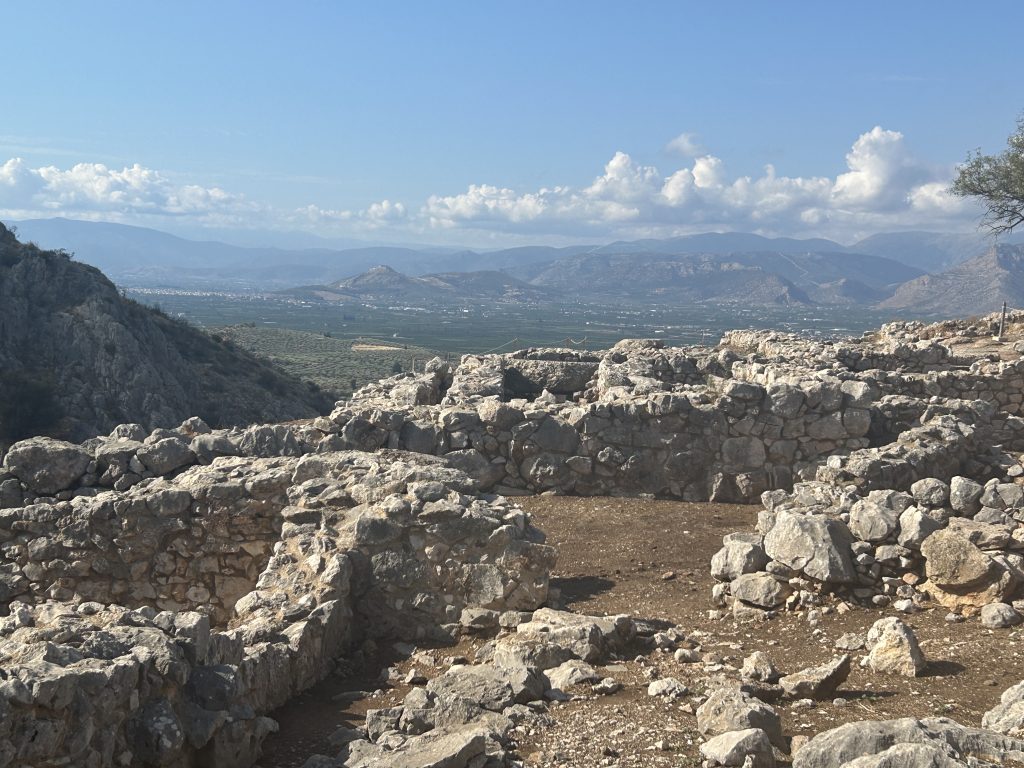
Archeological Museum at Mycenae
As with every ancient site I visited in Greece, Mycenae includes a small archaeological museum. I am particularly taken by the extensive collection of carved figurines and an intriguing ceramic snake.
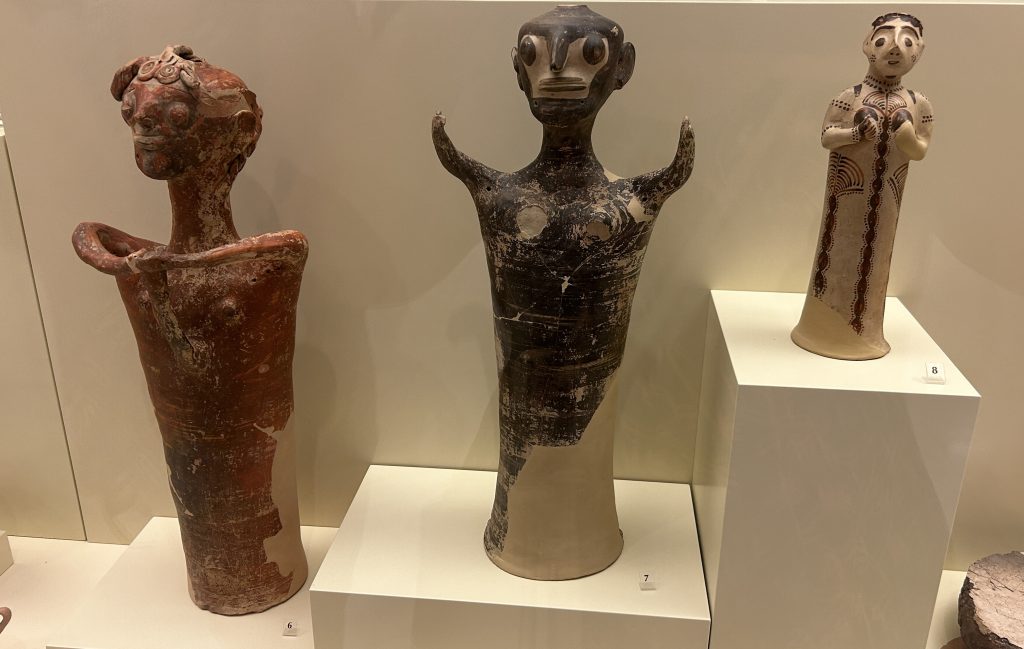
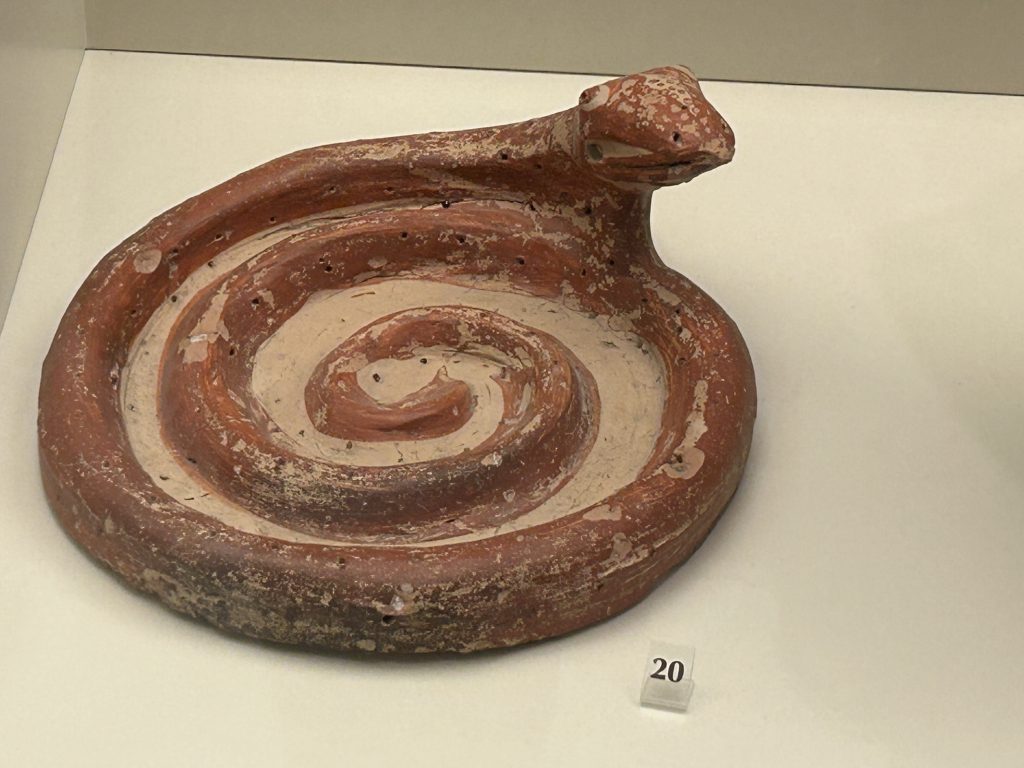
Ancient Corinth
Our next step is the ancient city of Corinth. In around 400 BC during Greece’s Golden Age, the city was one of the country’s largest and most important cities, with a population of 90,000. And then the Romans swept in during 146 BC, demolished the city as they were often wont to do, and built a new city in its place in 44 BC.
As a result, most of the ruins and the artifacts in the museum are Roman, not Greek.
Nevertheless, the site is pretty darned evocative. With the sky studded with interesting clouds, I snap some good photos of the remains of a Doric temple.
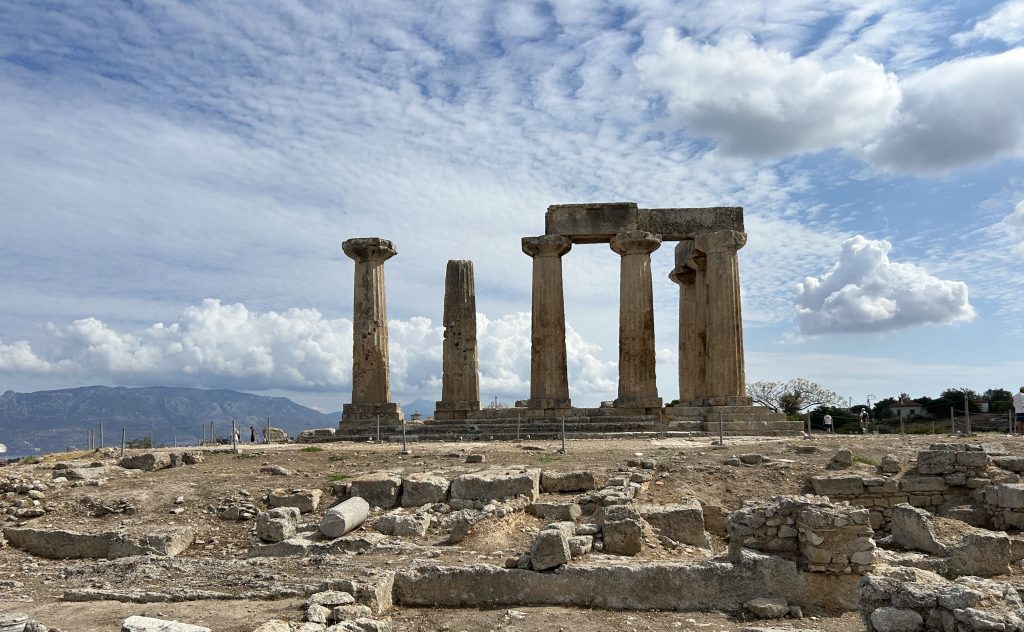
Corinth is famous with Christians because of the two letters that Paul wrote in the New Testament. Several tours led by Christian clerics were prowling the site while we were there, some even gathered in circles and singing and/or praying.
The ruins are quite extensive and worth visiting. The museum also merits a look. It contains a courtyard full of Roman statues along with other artifacts, including this well-preserved mosaic.
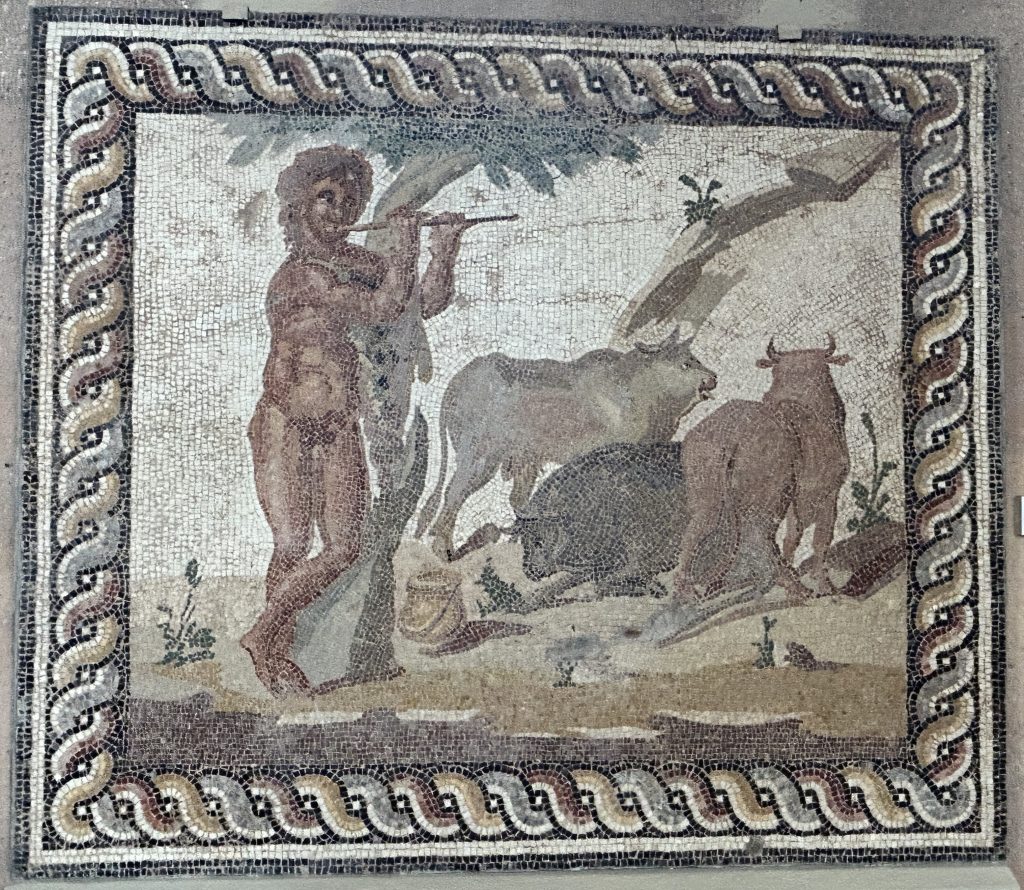
After wandering around the ruins for a while and visiting the museum, we enjoyed a tasty and reasonably-priced traditional Greek lunch at a small nearby piazza ringed with restaurants and souvenir shops.
Corinth Canal
Nowadays, most cruise ships and freighters can’t squeeze through the Corinth Canal, but it’s still a marvel of engineering. From a vantage point on a bridge high above the canal, it’s hard to believe the canal is 24.6 meters wide and 6.4 kilometers long. From the bridge, the canal looks a lot narrower and shorter.
As far back as the 7th century BC, engineers dreamed of building a canal to connect the Gulf of Corinth in the Ionian Sea with the Saronic Gulf in the Aegean Sea. Even Nero had a go. He actually broke the ground with a pickaxe and removed the first basket load of soil in 67 AD.
But then he died and the project was abandoned. It wasn’t until 1893 that the canal was finally built.
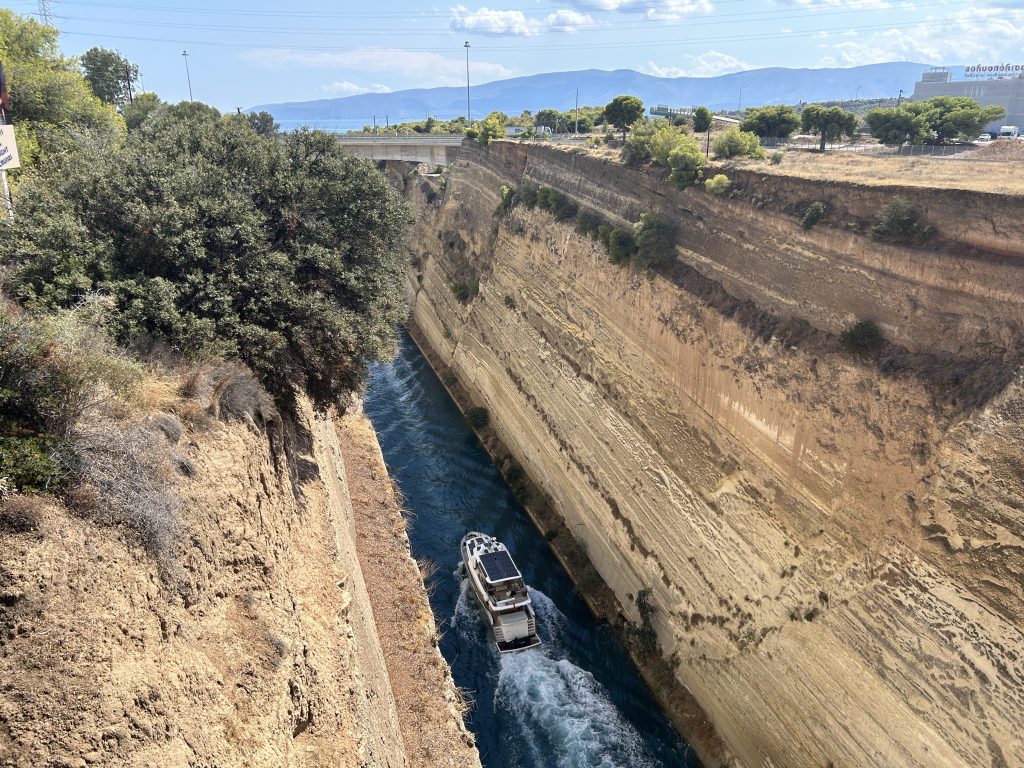
The Theater at Epidaurus
For me, the ancient theater at Epidaurus (a UNESCO World Heritage site and rightly so) is the highlight of the day. I’ve read about it and seen pictures, but nothing prepared me for its sheer size and grandeur.
Regarded as the best-preserved ancient theater in Greece, the theater was constructed in the late 4th century BC and is still used for performances.
Our guide, George, tells us that he saw a performance of Oedipus Rex in the theater when he was five and cried loudly when Oedipus died, thinking it was all real. He still comes to performances and brings his own children, assuring them it’s all make-believe.
Arrival at the Theater
The pathway from the entrance to the theater ends at the stage with the rows and rows of seats fanning upwards in a half-shell.
From the stage, the theater doesn’t look that big and I’m just a tad disappointed.
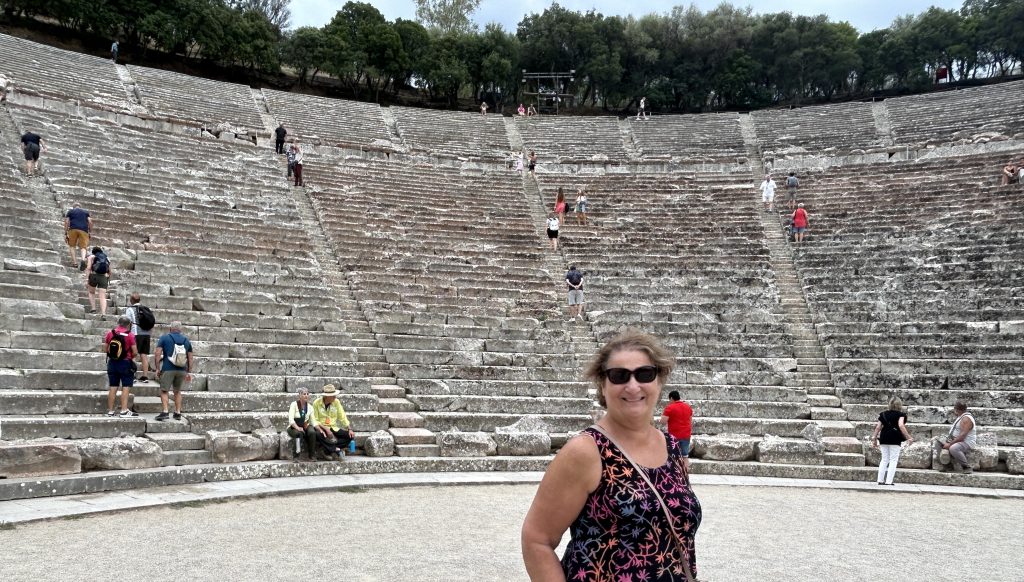
Climbing up the Theater
But then I start to climb—up, up, up with my heart pumping and my sore knees screaming. I count each step, pausing occasionally to catch my breath and note how much farther I have to go (far!).
Finally, I make it to the top and look down. A wave of vertigo makes me clutch the nearest railing. Yikes, I’m high.
The magnificent theater spreads out before me, perfectly engineered and harmoniously constructed. It’s like a poem in stone.
Waaaaay down on the stage, I hear people testing the famous acoustics that allegedly allow all 15,000 spectators to hear a pin drop.
I recommend you make the trek up the stairs to the top of theater if at all possible. You really can’t appreciate the breadth of this marvel until you see the whole theater spread before you with the hills and sky beyond.
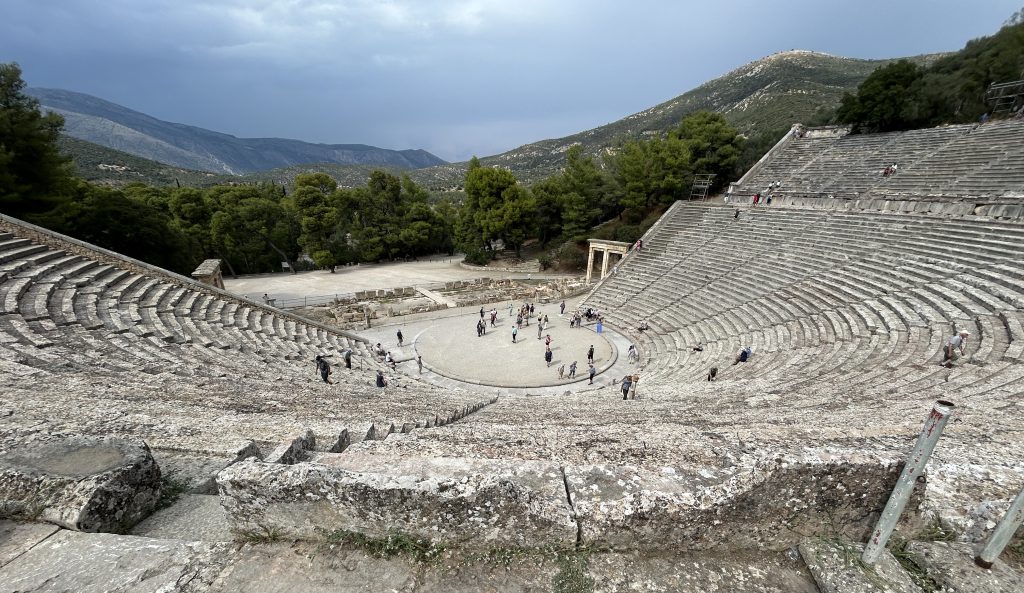
Around the Theater
The theater is situated near the ancient sanctuary of Asklepios, which was a celebrated healing center in ancient times and dedicated to Asklepios, the god of healing.
After visiting the theater, we wander through the extensive archaeological site dotted with columns and various and sundry ruins.
It’s an extremely pleasant place in which to imagine ancient people streaming along the walkways to see a performance by that new guy, Euripedes.
Back to Nafplio
It’s been a good, long day of sightseeing. Just as we pull away from the site, the heavens open. George slogs valiantly through a violent rainstorm, but fortunately, before we have time to worry about flooding, the sun bursts out and all is well with the world for the rest of the trip back.
We spend our last evening cruising around the picturesque streets, enjoying yet another tasty Greek meal (they’re all tasty), soaking up the atmosphere in lovely Syntagma Square, and picking up a few souvenirs.
Here’s the main plaza at night.
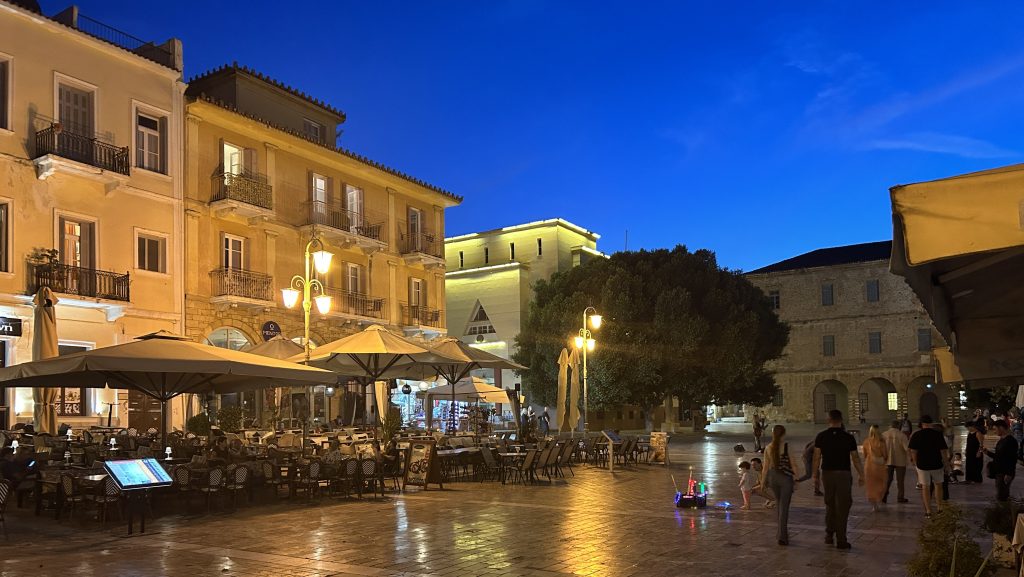
Tours Around Nafplio
GetYourGuide offers tours of the ancient sites on the Peloponnese Peninsular that are easily accessible from Nafplio. Many more tours depart from Athens, but then you’re faced with a much longer drive each way and may not find as many small group tours.
Here’s an option for a private guided tour to the archaeological sites:
If possible, see the ancient wonders of Mycenae, Corinth and Epidaurus from your home base of Nafplio. You’ll have more time to tour the archaeological sites as well as spend some quality time in Nafplio.
Win-win.
Conclusion
Have you visited Nafplio? Share your suggestions for artsy travelers in the Comments below.
Here are links to more posts about Greece:
- Stay in Oia for a Stunning Santorini Experience
- How to Spend Two Laid-Back, Glorious Days on the Greek Island of Naxos
- Nine Great Reasons To Visit Meteora in Greece
- How to Spend a Perfect Artsy Traveler Day in Athens
- Explore Greek Cuisine in a Savor Nafplio Cooking Class
- Should You Make the Climb to the Acropolis of Athens?
